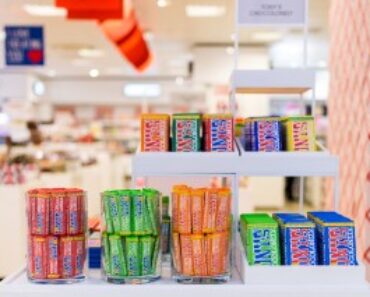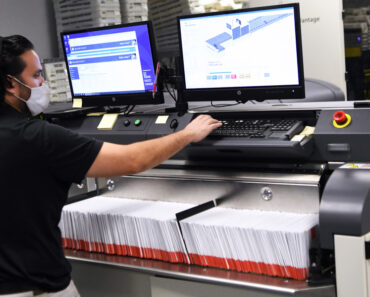This post was originally published on this site
According to the critics, 2011 was a tough year for Californian wines. Wine Spectator described growing conditions as “simply nasty.” 2014 in Brunello di Montalcino and many other parts of Italy was “challenging.” Weather extremes—too cool, too hot, too rainy—make life difficult for winemakers, but does that make those years a red flag for wine drinkers? If you enjoy wine, do vintages matter?
While it’s customary to casually speak of “good” and “bad” vintages, the wording critics and winemakers use is actually more circumspect. Growing conditions may be “nasty” or “challenging,” but that doesn’t mean the resulting wines are inherently poor.
“In the past growers and winemakers had less capacity to limit the effects of a less favorable vintage,” says Axel Heinz, estate director at Ornellaia in Tuscany. “Vineyard management and winemaking techniques were a little less sophisticated. We have not completely eliminated bad vintages, but we are much better prepared to cope.” For example, in a cool year a grower might adjust the vines’ canopy to shed more light on the grapes, aiding ripening.
At other times, maintaining quality simply means making less wine, setting aside grapes that didn’t ripen appropriately. In today’s competitive wine market, today’s producers typically prefer to sell less wine from a given year than risk damaging their reputation with a year’s-worth of wines that aren’t up to snuff.

Vintages are increasingly unpredictable
Whereas in the past, a poor vintage was often too cool, a warming planet means ripeness is easier to achieve than ever. The Brunello di Montalcino Consorzio rates each vintage from one to five stars. In the 1950s, there was one five-star vintage; the 1960s and 1970s each saw two such years. But since 2010, they’ve already seen three five-star vintages, with this year’s harvest yet to be evaluated. The last two-star vintage was 2002; the last one-star, 1984. Quality has become more consistent; the danger in the future may be over-ripeness instead.
When there are problems these days, they often come as a surprise, with weather patterns changing in unexpected ways. Over the past decade, certain French wine regions, including Bordeaux and Burgundy, have seen late frosts destroy budding vines, stopping the vintage before it has emerged for affected growers.
Hail, similarly, has become more frequent in much of Europe. “I was just in Serralunga and La Morra, in Barolo,” says Matthew Kaner, owner of Augustine Wine Bar and Bar Covell in Los Angeles. “They had hail that no one expected on September 5; some vineyards lost 50% of their crop.” That doesn’t mean the remaining grapes will produce poor wine. “In Burgenland [Austria], hail will decimate a vineyard, with 70% of the crop going away in twenty minutes,” Kaner says, “But then the 30% left over might be the greatest they’ve ever produced.”

Nonetheless, the vintage variation may still have an impact on the finished wine in the bottle. It depends what sort of wine one enjoys. “For the big brands, vintage is irrelevant,” says Joel Peterson, founder of Ravenswood in Sonoma, Calif., and more recently, Once and Future Wine. “They’re made to a standard and they use a fair amount of the tricks in the book. They level out those wines so year-in, year-out they taste pretty much the same.” A wine like Northern California’s Ménage à Trois, for example, is designed to taste the same year-after-year.
For premium wines, vintage is often still a factor, but to many that’s virtue, not a problem. “A lot of us like to think about and enjoy the variation within wine,” Peterson says, “and understand that certain vintages are different than others.” An individual wine drinker might prefer a given vintage over another, but that’s part of enjoying the diversity wine offers. Vive la différence .
In these cases, vintage variation expresses itself as a difference in character rather than quality. Ornellaia underlines this point by giving each vintage of their eponymous wine a name. 2013 is “L’Eleganza;” 2015, “Il Carisma.” With that, they commission an artist to create labels that exemplify that character; the Il Carisma commission went to South African artist William Kentridge, for example.
Give it time
More prosaically, knowing the basics about a year’s growing conditions can give some clue to style. “Cool vintages tend to have higher acidity and make brighter wines, and they generally tend to be longer lasting,” Peterson says. “A warmer year like 2019, which we’re working with now, the wines are going to be bigger, riper, and rounder.” Choosing to open one or the other might depend on personal taste, pairings, or one’s mood.

In addition, collectors who age their wines might find the cooler vintage preferable to lay down; Peterson says those wines are likely to develop better and longer than a wine from a warm vintage. Unfortunately, many critics tend to score wines based more on how they drink upon release and less on their aging potential. The 1996 Barolos, for example, were rather overlooked early on, surrounded on both sides by riper, warmer vintages. But with age, they have emerged as a highly-regarded wines.
More than just a number
Vintage generalizations also need to be recognized as just that. California vintage evaluations have traditionally been focused on Cabernet Sauvignon. Cabernet ripens late, so a vintage plagued by October rains could receive poor marks. But the Chardonnays from that year might be excellent because growers typically pick white grapes in August or September.
Different parts of a wine region may also respond to conditions differently. “Not all vineyards are affected the same way,” Kaner says. “There’s different vineyard aspect, different sun exposure, different soil types, different vine age. People have to stop talking about an entire region or entire year. We’re just sweeping everything together and things are not that simple.”

Vintage character matters even more if you like to drink aged wines. Peterson has spent the last couple of years tasting through older vintages of Ravenswood. “Vintage variation, and vineyard variation, actually, get emphasized with age,” Peterson says. He finds vintages like 1999 are still quite fresh, whereas vintages that were more drinkable at release are in danger of tasting tired.
At Augustine Wine Bar, Kaner specializes in offering older wines, often from vintages that were overlooked when they were young. “What Augustine has taught me is that the vintages people are sleeping on or not pay attention to, or that the media is not writing about, are often the ones that are lying in wait,” Kaner says. Opened at the right time, “No matter what was written about a vintage in the press, that wine can be mind-f***ing-blowing.”
More must-read stories from Fortune:
—The Italian prison where inmates learn winemaking
—Michelob was really early to this whole marketing ‘beer as wellness’ trend
—Behind the scenes at the largest beer competition in the world
—This Los Angeles company wants to balance your chakras with cocktails
—Why chefs have such a love-hate relationship with the Michelin Guide
Follow Fortune on Flipboard to stay up-to-date on the latest news and analysis.





